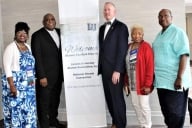You have /5 articles left.
Sign up for a free account or log in.
Over the break, I had a Zoom call with some longtime friends. One of them, who works at a well-known research university, complained with some vigor that because the university “needs that sweet, sweet housing revenue,” it’s forcing everyone to teach in person, COVID be damned.
Emily Oster’s piece in The Atlantic reminded me of that comment. It’s a call for a return to in-person instruction pretty much across the board. Oster notes, correctly, that an all-Zoom schedule can be isolating, and that student mental health has suffered through the pandemic. She points to the widespread availability of vaccines now, as opposed to 2020, and rightly suggests that we’re much safer for having them. She claims universal agreement on the inferiority of remote learning, which strikes me as quite an overreach. But her core argument is worth quoting directly:
“But universities also have a responsibility to their students. And this is not just a minor responsibility; it is their core responsibility. Parents entrust their children to universities. Many professors—myself included—have looked those parents in the eye and told them a version of I will watch out for your child. We have a responsibility to follow through on this now. We can do it very simply: by letting them go to school.”
I had some trouble with this.
First, and most basically, college students are not children. That’s the point of FERPA. “In loco parentis” is not the law of the land anymore, and it hasn’t been for a long time. Yes, colleges owe it to their students to treat them well, but it’s not because they’re somebody else’s children. They aren’t children. It’s because everybody deserves to be treated with respect.
Second, the use of “child,” followed quickly by the phrase “go to school,” implicitly conflates the K-12 context with higher education. That’s a category mistake, and it has consequences.
In the K-12 context, student ages generally fall within narrow ranges. (And remote instruction can force difficult childcare situations in the lower grades.) Student ages may also be relatively homogeneous among undergraduate populations at extremely selective institutions. But that’s far from universal. According to the AACC’s fast facts for 2021, for instance, the average age of a community college student in the US is 28. I will not refer to a 28-year-old as a child. Additionally, only 28 percent of community colleges have any campus-based housing at all, and in most of those cases it covers only a small fraction of the student body. That makes sense when you realize that 65 percent of community college students are part-time. (According to the College Scorecard, 100 percent of the undergrads at Brown are full-time, so this may not be top of mind there.)
Reflecting the diversity of our students and of their needs, we ran fall semester classes in multiple formats: in person, online live, online asynchronous and hybrid. Students who feel the need for in-person instruction and socialization are welcome to it; those who find remote work liberating—whether because of transportation issues, fluid work hours, disabilities or just personal taste—have that option. The most striking finding, though, is that many students mix and match among the formats. They might be on campus two days a week, using the flexibility of online work to balance other life needs the rest of the week. They decide for themselves what their needs are and how best to meet them. You know, like adults.
I don’t think Oster’s preference for in-person instruction is bad or wrong. I’m personally sympathetic to it, and it’s probably appropriate to her setting. But generalizing from that to all of higher education—or, worse, even wrapping K-12 into it—doesn’t work.
Students, and colleges, are much more diverse than Oster’s portrayal suggests. If we start from that premise, blanket statements of what everyone should do become harder to sustain. She makes a good case for Brown, but a terrible one for Brookdale. And both count as higher ed.







